Model program brings holistic solutions to divorce
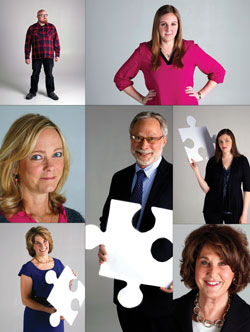
Photography by Willie Petersen
In what may be a first in the divorce world, Pamela Robinson refers to her experience in getting a legal separation as “beautiful.” It even featured the appearance of a puppy.
“I was absolutely pleased with it,” says the Denver mother of three and recruiter for accounting and finance professionals.
Robinson gives much of the credit to the Resource Center for Separating and Divorcing Families, a multidisciplinary, nonadversarial pilot program at the University of Denver that launched in fall 2013. Through it, divorcing and separating families are counseled on the legal and psychological aspects of dissolution by interns from the school’s graduate psychology and social work programs, along with its law school.
It’s a holistic approach that is gathering interest among some law theorists who note that many so-called legal problems are not solvable solely by the legal profession.
Editor’s Note: This is the latest article in the ABA Journal’s series of reports on the paradigm shift in how law is being practiced. As the legal business responds to the changes wrought by disruptive technology, financial strain and legal services competition, new approaches to client service are being tested, as in the Honoring Families Initiative described here.
There is also online-only content for the series, available here.
Paradigm Shift Feature Stories
February 2015
Model program brings holistic solutions to divorce
January 2015
Does the UK know something we don’t about alternative business structures?
June 2015
Who owns the law? Technology reignites the war over just how public documents should be
May 2014
These venture capitalists skip law firms for legal services startups
October 2013
Who’s eating law firms’ lunch?
July 2012
The Pedigree Problem: Are law school ties choking the profession?
January 2012
The Law School Bubble: How long will it last if law grads can’t pay bills?
Families never enter an actual courtroom. If they’re successful, their divorce or separation is granted by a visiting judge in a comfortable room on the university’s campus—a feature that’s more important than many people ever realize.
“We had two different court dates at the courthouse downtown before we were introduced to the program,” Robinson explains. “Just finding parking and … the physical act of walking into this sterile environment that doesn’t allow for cohesiveness or healing—I can’t get over it.”
She adds, “With its hard floors, the experience was very visceral to me and very intimidating. I can certainly see how it contributes to feeling tense and how that would lend to not being as good an outcome as we experienced.”
The program started small with roughly 100 families in its first year and another 100 in the 2014-15 academic year. But its founders are expansionists. They’re working to replicate it at universities and in communities nationwide.
“We’re seeing a significant amount of interest because this just makes sense,” says Rebecca Love Kourlis, a former Colorado Supreme Court justice who stepped down from the bench in 2006 to work full time on court reform and ultimately oversee the creation of the resource center.
“The more we talk about this nonadversarial approach, the more people pop up on our radar screen talking about how absurd it is to think judges should be deciding if your kids play soccer,” she says. “The more we educate ourselves and speak on these issues, the more we think there’s a tipping point—that people have become fed up with the way divorce has been handled, and they’re hungry for an alternative.”
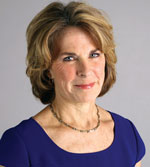
Rebecca Love Kourlis, creator of the center, works toward alternative dispute resolution. Photo by Willie Petersen.
A BROKEN SYSTEM
There’s an entire movement of people asserting that family courts are fundamentally broken. After serving in the family courts, Kourlis joined the chorus.
“It started when I was on the trial court bench, when I’d have divorce litigants in front of me,” she recalls. “I could see them being ripped apart by the process and the system, and I could see the effect it had on their kids because I would interview the kids. It was so painful and so patently wrong.
“The couple would start the process relatively conciliatory, and by the time they got to a final orders hearing, they were fighting about everything. That was my first clue to the fact that imposing an adversarial system built for civil disputes on a family in one of the most stressful, grief-ridden times of their life was just a complete mismatch.”
One volunteer for the center is Robert Hyatt, former chief judge of the Denver District Court. He came to a similar conclusion as Kourlis during his nearly 30-year career, which ended with his retirement and taking senior status in January 2014.
“Here’s what doesn’t work in the family law court,” Hyatt says. “When people go to court and judges take the bench, it’s litigation with all the acrimony and anger that accompanies litigation. I asked myself over the course of years: Is this really the right venue for the bulk of people getting a divorce who just need a plan to co-parent their kids?”
Study after study back Kourlis and Hyatt, suggesting the heightened conflict common among divorcing couples is harmful for all parties involved. For children, divorce is especially damaging. They are less likely to graduate from high school, according to the Canadian Journal of Sociology. They’re also twice as likely to be prescribed Ritalin, the drug commonly dosed out for attention deficit hyperactivity disorder. Other studies show that they are more likely to smoke (University of Toronto), and they’re more likely to end up divorced themselves (University of Utah).
The Resource Center for Separating and Divorcing Families is one of several initiatives emerging from the Institute for the Advancement of the American Legal System, which Kourlis heads and is based at the University of Denver. All pursue legal reform, including the Honoring Families Initiative, which works to create in-court and out-of-court solutions to problems that divorcing and separating families experience.
The RCSDF, which serves as the on-campus model for an out-of-court divorce center, is patterned after Canadian and Australian programs, and its goal is to create a process that floods separating and divorcing families with resources to ratchet back the level of conflict.
The center began working with families as a result of referrals from family courts, lawyers and mental health professionals. The program isn’t free. Couples pay based on a sliding scale. But first, they fill out an application and are screened to ensure that they’re appropriate for an out-of-court process.
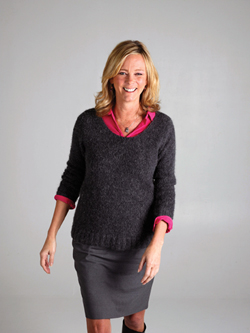
Melinda Taylor, RCSDF executive director: leads families to resolution within six months. Photo by Willie Petersen.
KEY QUESTIONS
“We have basic eligibility criteria,” says Melinda Taylor, the center’s executive director. “We ask that they don’t have any ongoing court-related protection orders or criminal violence, and that they have children.”
Potential clients also attend in-person screening interviews. “We’d do a one-hour interview with each partner individually, with a law and a mental health student,” explains Stacy Harper, a graduate of the University of Denver’s Sturm College of Law who interned at the center during the 2013-14 academic year. “Then we’d meet with our supervisors and decide whether they were a good fit and whether we would take them on as clients. If so, we had a discussion about the services we thought they could benefit from and what services they were looking for.”
Who’s not a fit? Primarily couples with domestic violence issues who need the protections and enforcement mechanisms courts provide. Also, couples whose behavior shows they won’t be open to coaching on how to work together. But neither factor is a deal breaker. Whether any particular family fits the program depends on the family’s demonstrated willingness to work together.
“Ultimately, we want to help families,” explains Julie Melowsky, a student in the University of Denver’s graduate school of professional psychology who interned at the center during the 2013-14 school year; she expects to graduate in 2016 with a doctoral degree in clinical psychology. “With domestic violence, if they’re still willing to work together and there’s no current domestic violence—maybe there was one instance a year ago—it was a gray line with the screening. But if one person refused to fill out the intake form, we wouldn’t work with them.”
Once in the program, families are assigned a two-person team of interns overseen by an experienced social worker, a psychologist and a lawyer. They’re drawn from nine to 12 interns chosen for each school year, roughly evenly from the graduate psychology department, the graduate social work department and the law school. The social work and psychology interns do much the same functions, except that the psychology student does psychological testing, if requested.
All interns undergo a 65-hour training program: 40 hours of mediation skills and 25 hours of guidance on such issues as child development, how to interview people, co-parent coaching and family law basics.
Each student team works with its assigned family from start to finish.
“I notify the court, and the court stops the case, issues a review date and lets us take over until resolution,” Taylor explains. “Then the interns are responsible from day one to set up the family’s therapeutic services while the law student tracks all the legal time frames. We have access to court records and the court’s e-filing system, and all documents and motions are done through us. If the families come to an agreement, that’s when the judge comes and conducts the final hearing.”
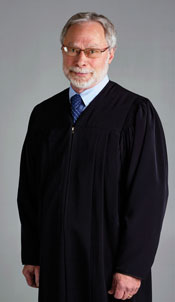
Robert Hyatt, retired judge and center volunteer, presides over final order hearings. Photo by Willie Petersen.
A CASE STUDY
Taylor walks through a typical case. It begins with the initial service-plan meeting. Team members might tell the couple: “Based on our interview with you and what’s going on with your family, we know you want mediation, and we want to make sure you’re adequately prepared for it. So we recommend a session of co-parent counseling.”
Also available are support groups, which run for six weeks. They’re segregated by gender and age, with men’s and women’s adult groups and three age levels of children’s groups. Adult group sessions cover a different topic each week, Taylor explains, including stages of transition, self-care and moving on.
“We also have a local financial planner who agrees to take cases on a reduced-fee basis,” she says. “The planner will advise couples on what their assets look like and what they’ll need to set up a second household, along with things like whether they need to file for bankruptcy.”
The process is much shorter than in-court dissolution. “We’ve made a commitment to the courts that we wouldn’t work with families for more than 180 days for dispute resolution cases, so they’re not languishing,” Taylor says. “Most of our families are done within 90 to 120 days, and then they have their final orders hearing.
“But many, many continue services beyond the final order. Those are typically therapeutic services. We had a family who had final orders signed in May and came back to us because their son had suicidal thoughts. He’s engaging in therapy with us. We get a lot of that.”
A judge must preside over final order hearings, and Hyatt spends about a day each month volunteering in that capacity.
“At the final hearing, which is held on the university campus, not in a courthouse, we have an electronic recording system, and I’m still a judge,” he explains. “We go through the parenting plan and talk about how it’s going to work, and I ask questions, so I’m able to make appropriate findings for granting their divorce and approving the plan.
“The best thing about the plans is that you can tell—unlike lots of the parenting plans you see in court—that these people have put a lot of thought into them. I’ve been really impressed with the thoroughness and the details of how they’re going to deal with their kids and each other going forward.”
As a result, Hyatt predicts parties will engage in very little post-decree bickering. “The biggest problem [in traditional courtroom divorces] is that when you end up with the final court order, parties have become so invested in the battle that it’s only just begun,” he says. “We’re inundated with post-decree litigation—motions to modify, motions to reconsider and motions to restrict parenting time based on not following the court’s orders. It’s just staggering. I’d be willing to bet not one of these parties will engage in post-decree litigation because this is their order. They fashioned it, and they never engaged in the ugliness that comes with courtroom litigation.”
The Institute for the Advancement of the American Legal System has engaged a researcher to track the program’s results, with a full evaluation after three years. “We’ve always said this is a three-year research project,” Taylor says. “We want to look at outcomes so we can truly assess the advantages and disadvantages of this approach.”
FAMILIES ARE FANS
Whatever the research shows, anecdotally the program has already logged successes. Pamela Robinson says the outcome mediated at the resource center was equitable for both her and her ex-husband, Jason, though she didn’t initially feel that way.
“When we got down to splitting our assets and talking about things like credit card debt, that’s probably where it got most tense,” she recalls. “I did have questions because it didn’t go so much in my favor. I have friends who are attorneys and CPAs, and I said, ‘Does this sound right?’ They backed up what the person at the resource center was saying.”
Not having a lawyer was actually a benefit, in Robinson’s opinion. “During the division of the assets, when I came out thinking I was paying more—and I was, but that’s what was fair and equitable—it was important that I didn’t have somebody in my corner egging me on to fight,” she says. “I could see where this could get ugly if we were in court and represented by people batting for us, rather than having two people who were advocates for both of us and for the family.
“It always came back to the family. That makes you put your fists down and remember, ‘I’m not here to win.’ It’s just an undoing, and it felt like that.”
Where did the puppy fit in? “One of the counselors brought in her dog—a teeny tiny puppy—and how can you be mad when a puppy’s in the room?” asks Robinson. “It made it about the family. That was priceless, and that really helped us.”
Dena and Steven Singer are also relieved to have divorced without the stress, anger and cost they’ve seen others endure. They have two kids in college and another who’s 12, and they signed the papers to end their 25-year marriage in October.
“I’m glad we went through this process this way,” says Dr. Steven Singer, a family practitioner in Littleton, Colorado. “In family medicine, we’re doing more outreach with care management, trying to get more of an idea of what’s happening in the home.”
“In a way, I feel this was a much healthier way for me to go through this,” he says. “Even though there’s some antagonism and anger and all these emotional feelings wrapped up with a failed marriage, it made it tolerable to go through.”
Dena Singer, an emergency room physician’s assistant, heard about the program from a friend and visited the center the day she called for more information.
“I loved it,” she says. “What we didn’t want was for it to be adversarial, and I didn’t want it to be piecemeal. But aside from that, we really wanted a place my kids could go to, even my older ones.
“What kept me in my marriage too long was that it always felt too big to disentangle. Then someone says, ‘We can help you figure out the infrastructure of your life and separate that out, teach you the legal stuff and also deal with the emotional struggles like teaching you how to tell the kids.’ “
Though the couple didn’t engage many of the mental health resources during their dissolution—primarily, they say, because their schedules didn’t permit it—both expect their 12-year-old to join the kids’ group therapy sessions in the future.
As if her divorce weren’t enough of a challenge, Dena Singer’s niece disappeared at the same time and was never found. “I’m a really strong and a really thoughtful woman, and during that time I felt like I was falling off a cliff,” she says. “I’m very thankful for the people in my life who kept me from doing that, and the people at the center are part of that group. … I could tour the country and talk to legislators and sell this program.”
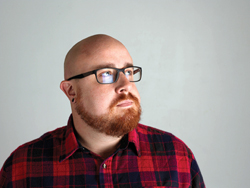
Jonathan Terbush, divorced father of three, touts the supportive services. Photo by Willie Petersen.
Jonathan Terbush, an internal auditor from Denver, calls himself a “huge evangelist” for the program. “I’ve told—
I can’t tell you how many people so far: ‘You have to go through the center, and here’s why.’ “
That’s a huge shift from the terror Terbush felt when he filed the papers to unwind his eight-year marriage and sort out issues surrounding his three children, ages 3, 6 and 8.
“I assumed we were going through a court divorce and that we’d have to retain legal counsel—the whole nine yards,” he says. “I had really close friends who’d been divorced, and they either had a lengthy legal battle or it was very expensive. I’d also heard stories of people who’d lost everything and were basically working two jobs to afford a studio apartment. That scenario freaked me out.”
All of Terbush’s children participated in mental health counseling. “My oldest two kids were very confused about the whole situation,” he recalls. “They had resources they could take home, stories they could read and stuff they could watch. There were play therapists interacting on a very intimate level with the kids to let them have a sense of control and understanding of what’s going on.”
Terbush’s daughter bonded so closely with one of the mental health interns, he’s arranged for her to continue to receive services from the intern’s new employer.
The men’s support group was Terbush’s go-to resource. “That was incredibly helpful,” he says. “There were guys who’d just filed for divorce two weeks prior and guys who’d been divorced for more than a year, so there was a wide spectrum of situational awareness in the divorce process. It was a great exchange to have that range of perspectives, where everybody was able to contribute and help out in a very significant way.”
Terbush estimates he and his ex-wife paid no more than $700 for all the center’s services. Singer says he and his ex-wife spent less than $3,000.

Sheila Gutterman, family law firm co-founder, watches the center’s progress. Photo by Willie Petersen.
SOME CRITICISM, TOO
A few clients noted that because the center was new, the support groups didn’t always have enough participants to provide maximum benefit to families—and some groups never took off. Taylor agrees there’s an optimum size for support groups and says they’re getting larger as word of mouth spreads.
Robinson also found some of the mental health students to be too inexperienced to be of much help.
“People sat down with us, and they didn’t know what questions to ask,” she says, “and we didn’t know what they were trying to find out from us. … Jason’s in his mid-40s, and I’m getting there, and the students may not have enough life experience to be as effective as they could be.”
The skill level of the program’s mental health professionals is also something Sheila Gutterman, president and co-founder of the Gutterman Griffiths family law firm in Denver, would like to know more about. Gutterman, who came to the law with a master’s degree in guidance and counseling and is married to a psychologist, is unaffiliated with the program but has a strong interest in alternative dispute resolution. And she’s been following the center’s progress.
“From the mental health perspective, I’d want to know the students wouldn’t just open up all the feelings—and they’d be able to handle it once those feelings are opened up,” she says. “Or if they’re dealing with issues with children, that they’re getting the supervision and training to see the entire picture. Mom might be alienating against Dad, and Dad looks like a jerk. But maybe Dad is a jerk. I do think experience matters.”
Taylor says every client understands from the beginning that a goal of the center is to train professionals of the future. That’s why they’re closely supervised. “No one expects the students to be fully formed professionals yet,” she says. “But they’re remarkably good.”
There are also critics in the local family law bar.
“The people who talk in litigation language are very threatened by the institute and collaborative law,” Gutterman says. “There’s tremendous resistance, even among people who give lip service to the notion: ‘Well, we want to change the system; we’re amicable; we settle everything.’ There needs to be a whole paradigm shift.”
That lawyers are raising concerns about the center’s work isn’t news to Kourlis. “Of course there are objectors, and for the most part, I think they’re trying to voice legitimate concerns,” she says. “For example, there are objectors who worry about domestic violence victims and feel you have to be really careful they’re not swept into this process inadvertently in a way they’d be disempowered. Those are legitimate concerns, and there have to be screening systems.
“Similarly there are the lawyers who take the position that there are very significant legal rights at issue, and people have to have enough information to make good decisions,” Kourlis adds. “That’s a very legitimate concern, and you have to build in a process that people indeed know what they’re doing, the impact on them and what the law says.”
However, Kourlis says, many opponents have been silenced by two factors. One is the increasing number of people who believe the family court system itself is damaging those who get sucked into it—a concept that Michael Town, a retired judge in Honolulu, calls “jurigenic” harm. The other is the staggering increase in self-represented litigants. In 2013, the ABA Standing Committee on the Delivery of Legal Services noted that national data indicates that 60 to 90 percent of family law cases involve at least one self-represented party.
“It’s no longer responsible to say everybody should have a lawyer,” Kourlis says. “Legal aid doesn’t provide funding for divorce litigants, and a number of people don’t want a lawyer because they believe it will fan the flames in their divorce.
“When we did our pilot project, there was much more opposition from the bar than we’re encountering today, and I lay that at the feet of the increased research showing the [current] system is a disservice, and that there’s a growing number of self-represented litigants.”
FUTURE STRATEGY
The goal is to have replicates of the resource center in place within five years. Kourlis is hunting for funding, and on her to-do list is creating a business plan to identify the components that must be in place for new centers. She’s also planning a community-based model outside a university setting.
“The ultimate objective would be to create a replicable model any university or community could pick up and put into place,” she says. “We’d be able to provide the training, the format and perhaps a case-management system, as well as permitting the sharing of data among the centers so everybody could be on the same trajectory.”
Evidence of a tectonic shift toward a nonadversarial family law approach is emerging. There’s been growing talk of other courts, like drug or veterans’ courts, being venues for problem-solving. And asked at a recent Chicago appearance about future trends in the law, author and legal adviser Richard Susskind pointed to multidisciplinary approaches to legal issues.
Kourlis says, “We’ve begun to talk about divorce courts as being problem-solving, and now I’m beginning to see that everywhere. Or there’s the notion that divorce has to be nonadversarial in the first instance. Again, people are coming out of the woodwork writing about that, doing radio programs or blogging about those issues. That really has surprised me.”
If it catches fire, this type of out-of-court multidisciplinary approach could benefit the entire judicial system.
“One thing I find fascinating is that at the conclusion of our program, participants are expressing enhanced views of the law students and the court system,” Taylor says. “People’s perception about the court system and access to justice has improved, and that’s something I didn’t anticipate.”
This article originally appeared in the February 2015 issue of the ABA Journal with this headline: “Soothing the Split: Model program brings holistic solutions to divorce.”
Sidebar
Meet the Alumni
The Resource Center for Separating and Divorcing Families in Denver provides a holistic approach to the challenges of family breakups. Below, some participants and interns in the program share their impressions of the experience.
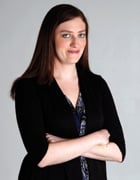
University of Denver, Sturm College of Law
Interned during the 2013-2014 school year
"Could I now work in a traditional divorce firm? I've actually thought a lot about that. For me, it would be difficult because I think the out-of-court process is better, more effective and a lot healthier for people. I'd be willing to try working for a traditional firm, but only with the understanding that I have to take the knowledge and experiences I now have into that role and do what I can to be aware of the mental health aspects and the importance of a multidisciplinary approach. There's a lot that can be brought into a traditional law firm environment."

University of Denver, Graduate School of Professional Psychology
Interned during the 2013-2014 school year
"With one family, it was turning out that they weren't going to be able to agree with one another at all. But we were able to work with the kids, trying to communicate the impact of the conflict. The parents were eventually going back to the court, but I know I had an impact working with the father for three months, and I think the kids really benefited from having someone to talk to who wouldn't get mad."

University of Denver, Graduate School of Social Work
Interned during the 2013-2014 school year
"I was working with a couple teaching them co-parenting skills for their new relationship, and I told them they're not going to have the same relationship as when they were married. I think sometimes people don't think of that. I had a family where the parents were trash-talking about each other when the other parent wasn't around. That led to the kids acting out in school and being really disrespectful to the opposite parent. One of the parents broke down crying and said, 'I didn't realize I was doing that, and I get that now.' "
Pamela Robinson
Participant
"I don't think this program would serve for people trying to do some damage. That's not what this program is about. I thought, 'Thank goodness we had people who knew what they were doing.' And they were completely neutral. There was never a sense they liked him more than me. They were vying for both of our best interests."

Participant
"I'm definitely the poster child for the center. It's a way you can create harmony for yourselves and for your children. Having a student coupled with a professional in that particular setting really invokes long-standing change. From my standpoint, that's very exciting—to go through such a process and to feel like there are people who've learned and gained in addition to what I've gotten out of it. It's a really shared process."

Participant
"It was important to me that emotionally everybody makes it through healthy-wise. At the same time, I wanted to make sure I wasn't going to take a really big hit. But I felt like during the process, you could start quibbling over little sums of money—and they do sort of add up to some degree—but when you think about how much in the long run and the downstream of what you're creating by being belligerent or combative, it wasn't worth that price. To be honest, I don't want to say it's a pleasant process. It's painful, but it was less painful than it could be if it was between lawyers. You've got this safety net of social workers and psychologists for both adults and kids, along with the law aspect of it, which makes it easier to go through."
(Photos by Willie Petersen)
G.M. Filisko is a lawyer and freelance journalist in Chicago.



